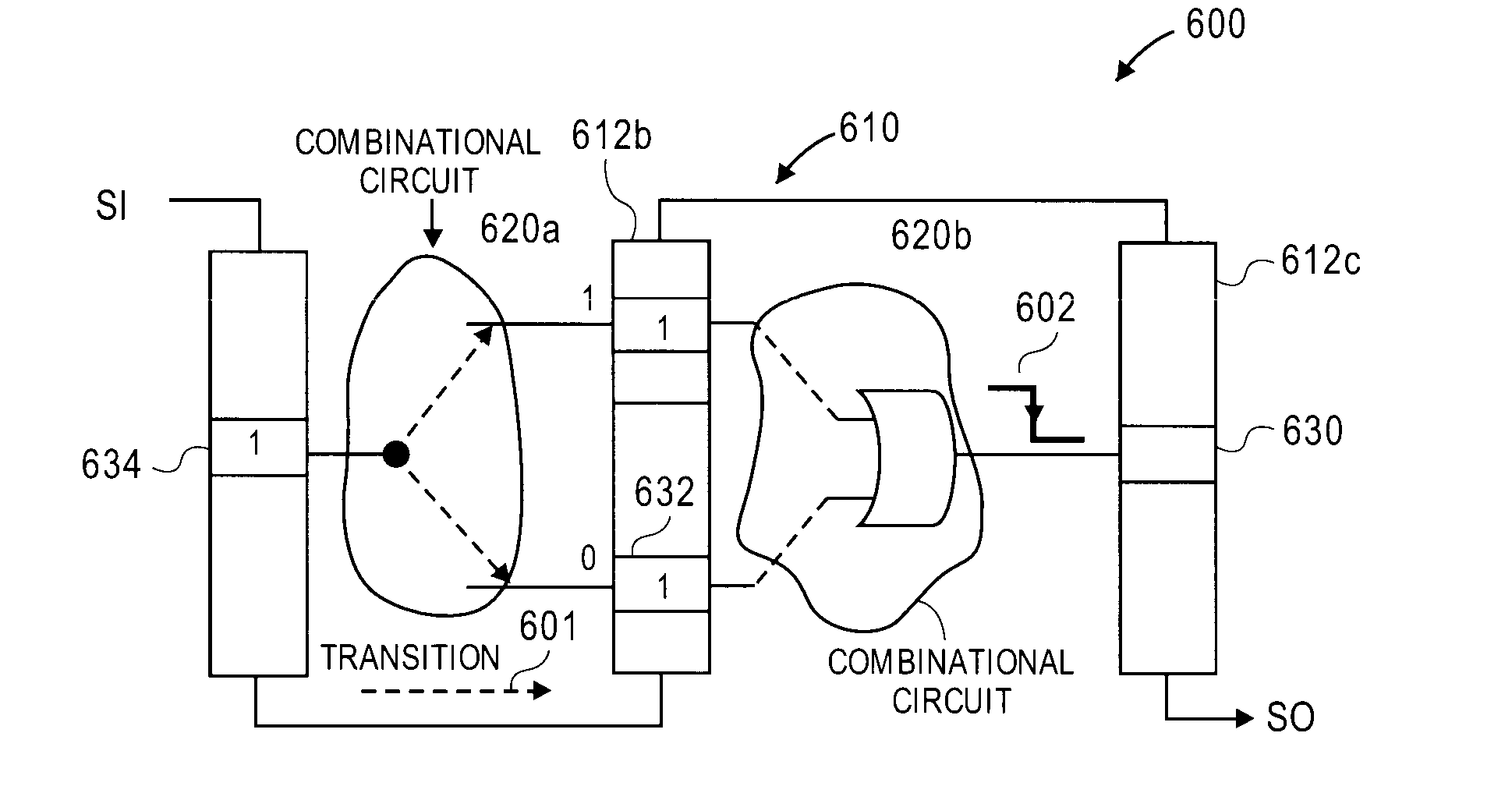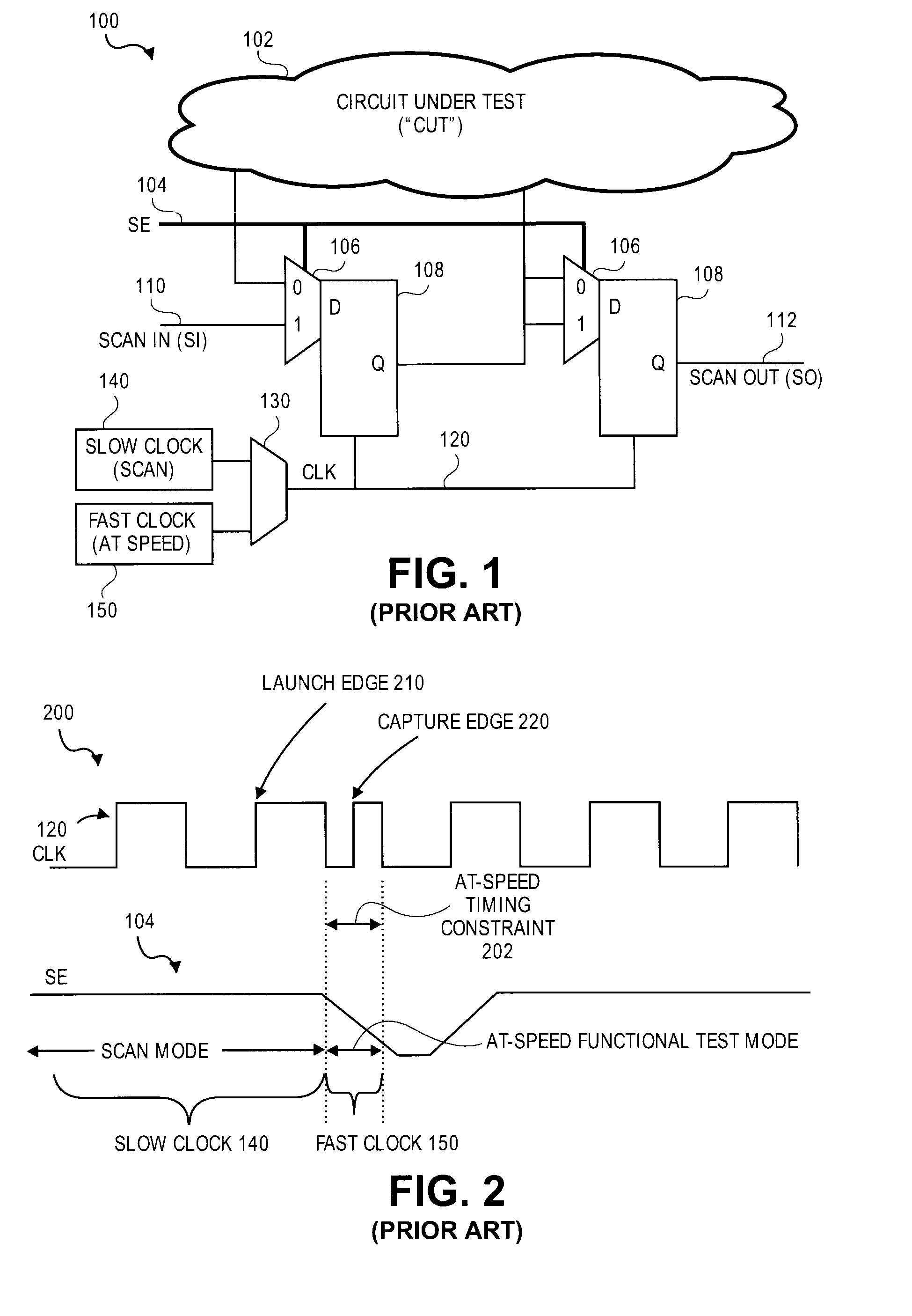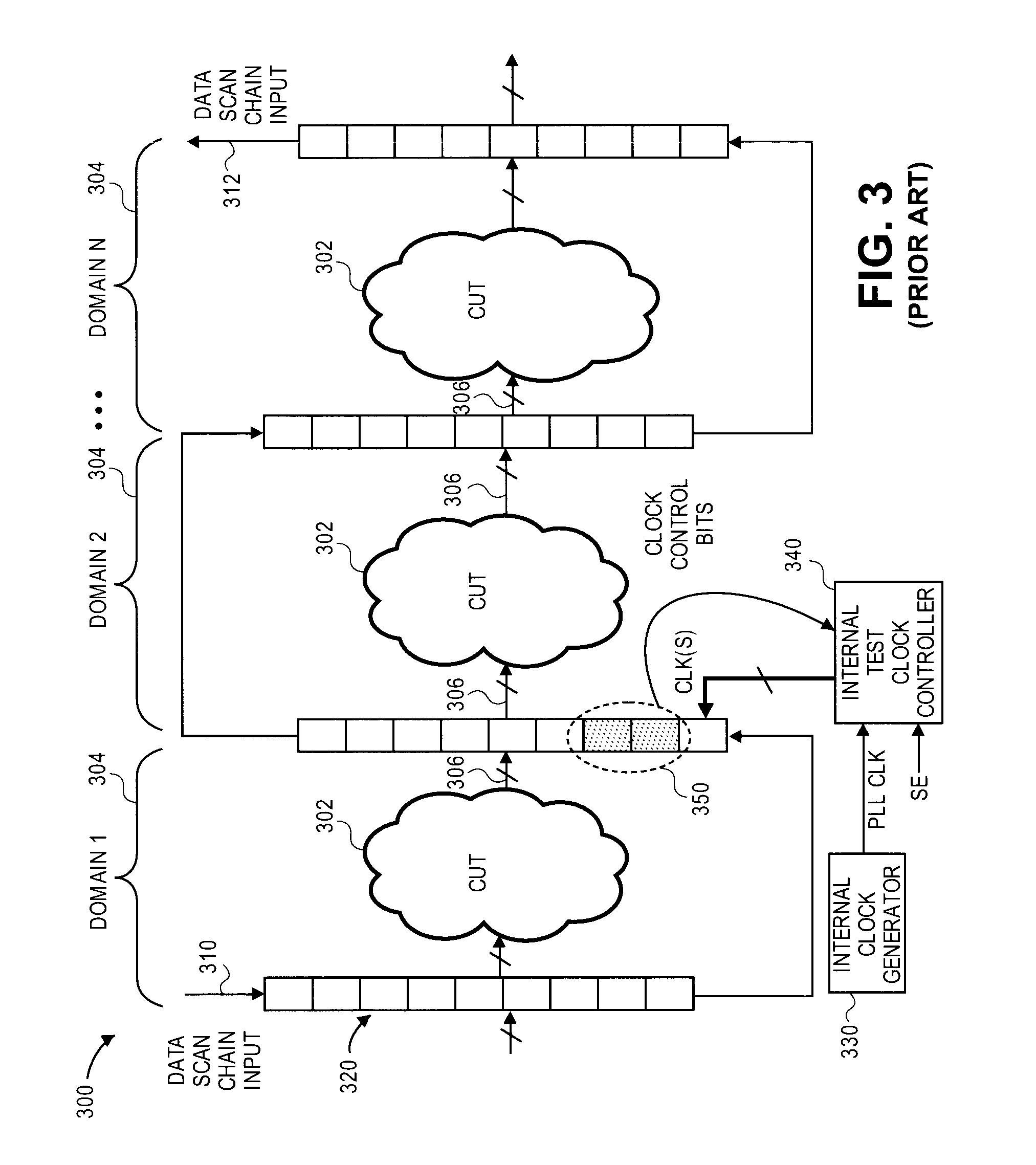Test clock control structures to generate configurable test clocks for scan-based testing of electronic circuits using programmable test clock controllers
a control structure and clock technology, applied in error detection/correction, detecting faulty computer hardware, instruments, etc., can solve problems such as increased conductor-related failures and resistive-type defects, inconsistent contact resistances, and signal transitions that rise and fall more slowly, so as to reduce the number of times, enhance the effect of test coverage and low cos
- Summary
- Abstract
- Description
- Claims
- Application Information
AI Technical Summary
Benefits of technology
Problems solved by technology
Method used
Image
Examples
Embodiment Construction
OF EMBODIMENTS
[0047]FIG. 7 is a block diagram illustrating a test clock control structure for testing at least one circuit, according to one specific embodiment of the invention. Test clock control structure 701 includes one or more programmable test clock controllers 700 for testing circuits under test 703. As shown, programmable test clock controllers interact with data on two distinct layers: a control layer 720 and a scan layer 730. Programmable test clock controller 700 includes a test clock generator 704 for generating a configurable test clock (“CTC”) 714. Programmable test clock controller 700 also can include a scan layer interface 712 to drive at least a scan chain portion of a scan chain 732 with configurable test clock 714 via scan layer interface 712. As shown, scan chain 732 lies in scan layer 730. Further, programmable test clock controller 700 can include a control layer interface 710 to access control information 724 for controlling, for example, scan chain 732 or s...
PUM
 Login to View More
Login to View More Abstract
Description
Claims
Application Information
 Login to View More
Login to View More - R&D
- Intellectual Property
- Life Sciences
- Materials
- Tech Scout
- Unparalleled Data Quality
- Higher Quality Content
- 60% Fewer Hallucinations
Browse by: Latest US Patents, China's latest patents, Technical Efficacy Thesaurus, Application Domain, Technology Topic, Popular Technical Reports.
© 2025 PatSnap. All rights reserved.Legal|Privacy policy|Modern Slavery Act Transparency Statement|Sitemap|About US| Contact US: help@patsnap.com



